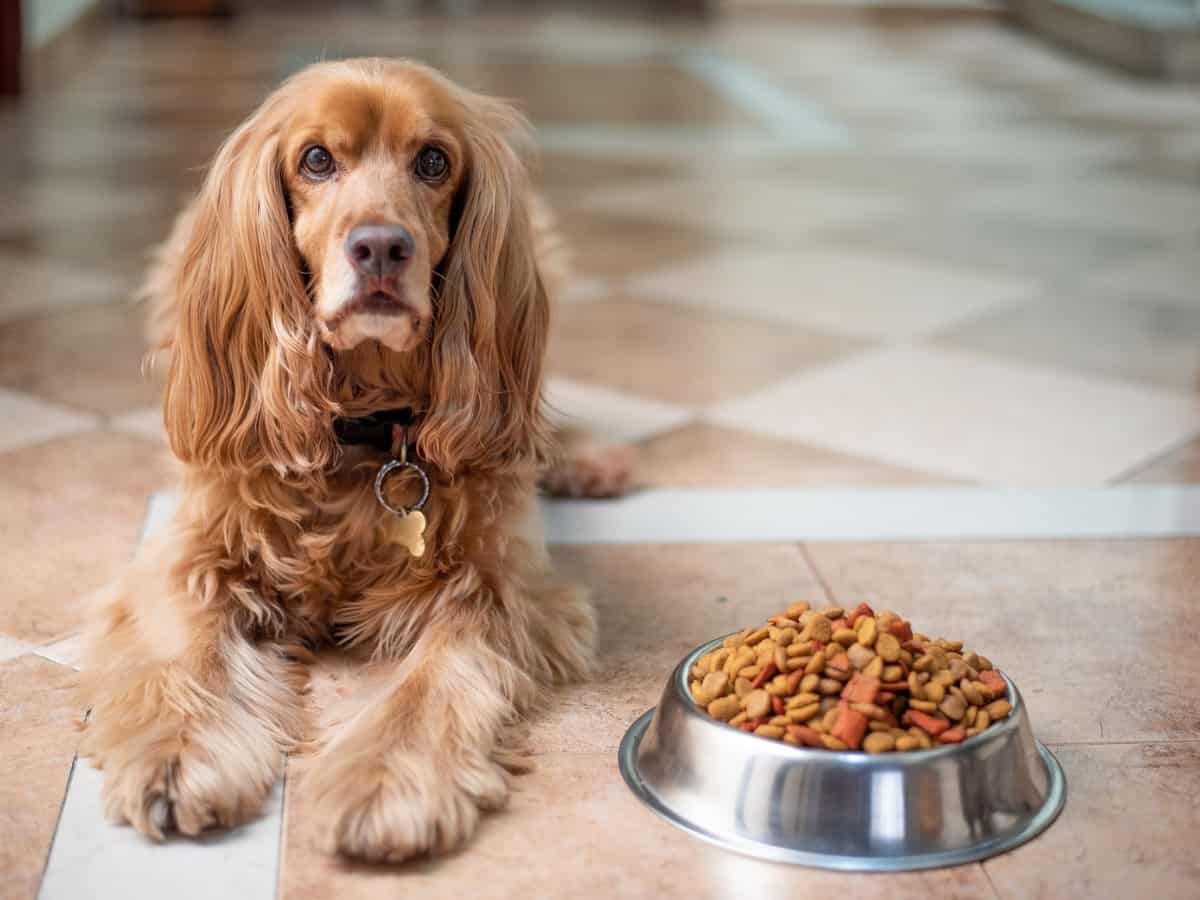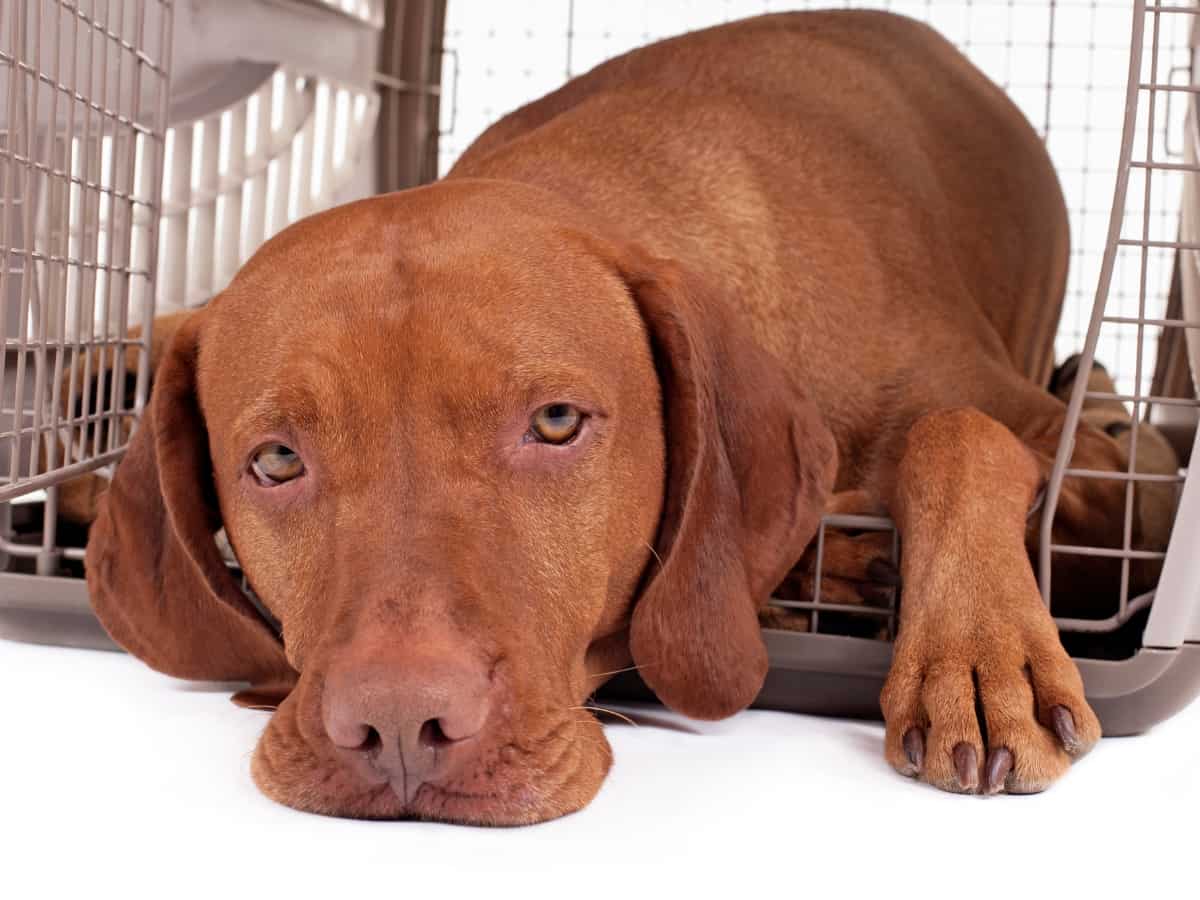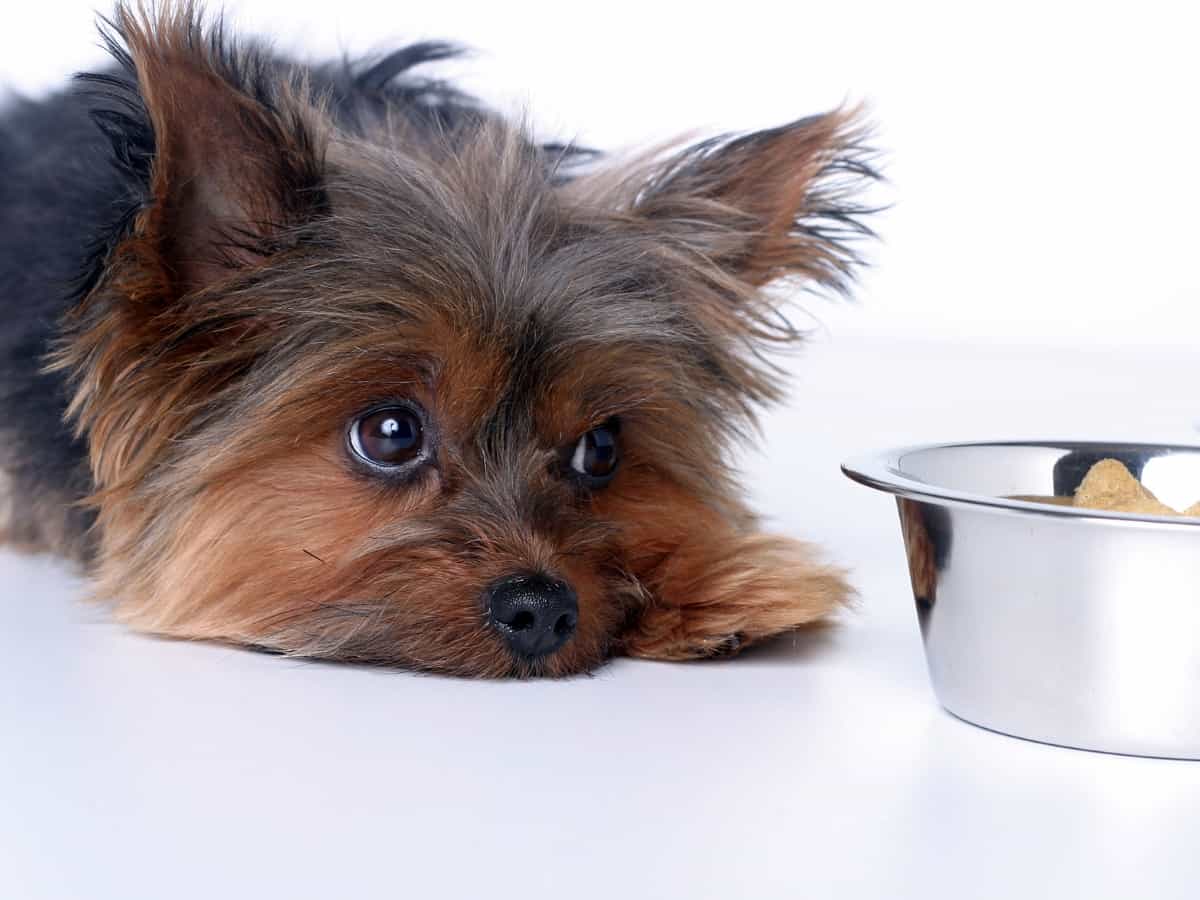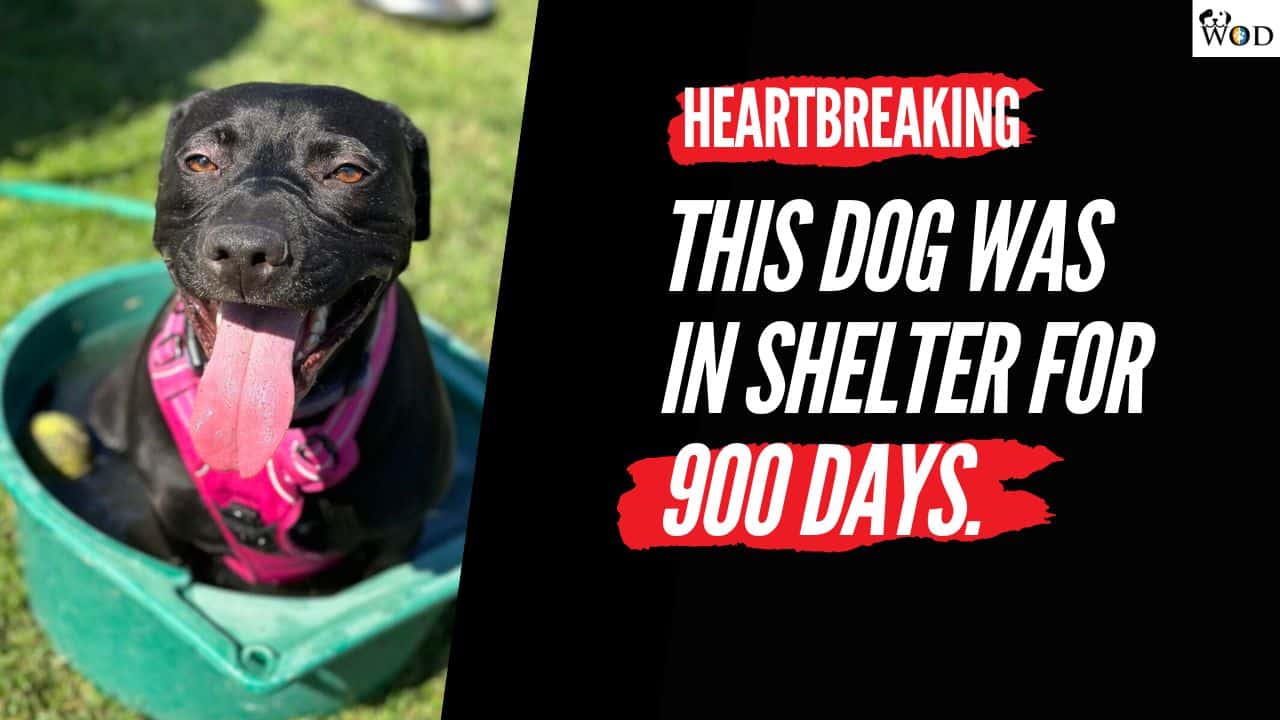While this behavior may seem strange and inexplicable, there are several possible reasons why your dog won’t eat in front of you. One reason could be related to a dog’s instincts. In the wild, dogs would often hide their food from other animals, including other dogs, to prevent their meals from being stolen.
Your dog may not eat in front of you due to instincts, health issues, a change of feeding schedule, food preferences, distractions, noise, or lack of privacy. Other reasons include anxiety, stress, fear, age-related issues, or due to medication or recent vaccinations.
While domesticated dogs may not need to worry about competing with other animals for food, this instinctual behavior could still be present in some dogs, causing them to feel uncomfortable or vulnerable while eating in front of their owners.
Other factors, such as health issues, feeding schedule, or food preferences, could also contribute to your dog’s unwillingness to eat in your presence.
So, if you want to explore further while your dog won’t eat in front of you, you’re in the right place. Let’s get started!

Why Won’t My Dog Eat In Front of Me?
Here are 10 reasons why your dog won’t eat when you watch him. Let’s dive into these in more detail.
1. Natural Instincts
As a dog owner, you may have noticed that your furry friend sometimes seems hesitant to eat in front of you. One possible reason for this behavior is your dog’s instincts.
In the wild, dogs would often hide their food from other animals, including other dogs, to prevent their meals from being stolen.
While domesticated dogs may not need to worry about competing with other animals for food, this instinctual behavior could still be present in some dogs, causing them to feel uncomfortable or vulnerable while eating in front of their owners.
Some dogs may simply prefer to eat in solitude, making them feel more secure and less anxious.
It’s important to remember, though, that not all dogs exhibit this behavior. In fact, some dogs are the complete opposite and won’t eat unless you are there.
There may also be other reasons why your dog won’t eat in front of you.
2. Health Issues Or Digestive Problems
If your dog is experiencing pain or discomfort while eating, they may associate that discomfort with you, which could cause them to avoid eating in front of you.
Some dogs may avoid eating if they have an upset stomach, nausea, or other digestive issues. These issues could be caused by various factors, including food intolerances, allergies, infections, or more severe health conditions.
If you suspect that your dog’s reluctance to eat is due to health issues or digestive problems, it’s important to consult with your veterinarian.
They can help determine the underlying cause of the issue and recommend the best course of treatment to get your dog back to its healthy, happy self.

3. Feeding Schedule Or Routine Change
Dogs are creatures of habit and thrive on routine, so any changes to their regular feeding schedule or exercise can cause stress and anxiety.
For example, if you used to feed your dog in the morning but recently switched to an evening feeding schedule, your dog may take some time to adjust to this new routine.
Similarly, if you feed your dog in their usual eating spot but have recently moved or changed their eating area, they may feel hesitant to eat in the new location.
Suppose you suspect your dog’s reluctance to eat is due to a change in its feeding schedule or routine. In that case, it’s important to gradually introduce any changes and make sure your dog feels comfortable and secure during mealtime.
Try to maintain a consistent feeding schedule and provide a calm and quiet environment during mealtimes.
4. Food Preferences Or Dislikes
If you’re wondering why your pooch is turning up its nose at mealtime, it could be due to its picky palate.
Just like humans, dogs can have their unique food preferences and dislikes and may refuse to eat certain foods, especially if they don’t find them particularly tasty.
Who wants to eat the same boring kibble every day when there are so many other delicious smells and flavors to explore?
So, if your furry friend is suddenly snubbing their food in front of you, it might be time to mix things up and try some new doggy cuisine.
I like to add water to my dog’s dry food to change the aroma and make it more palatable. You can also check out this article for some cool ideas, 15 Easy Foods To Mix With Dry Dog Food (For Fussy Eaters).
Maybe your dog prefers a hearty beef stew or a savory chicken casserole, or perhaps they have a sweet tooth and would enjoy some homemade doggy treats.
5. Anxiety Or Stress
Dogs can experience anxiety and stress for various reasons, such as changes in their environment, separation from their owners, loud noises, or new people or animals in their space.
“Feeling anxious or stressed can affect your dog’s appetite, causing them to lose interest in food or avoid eating altogether.”
Suppose you suspect your dog’s reluctance to eat is due to anxiety or stress. In that case, it’s important to identify and address the underlying cause of anxiety and to help them feel more comfortable and relaxed.
To help reduce your dog’s anxiety or stress levels, you can provide them with a safe and comfortable space to eat without feeling threatened or overwhelmed.
You can also consider using calming techniques, such as playing soothing music or using pheromone sprays or diffusers, to help your dog feel more at ease during mealtime.

6. Distractions Or Noise
Have you ever noticed that your furry friend gets easily distracted or spooked by sudden noises during mealtime?
If so, this might be why your dog won’t eat in your presence. Distractions or noise can cause your dog to lose focus on their food, become anxious, and eventually refuse to eat.
Dogs have a keen sense of hearing and can be easily startled by loud noises, such as fireworks or thunderstorms. Even everyday noises like a doorbell or a vacuum cleaner can be enough to distract your dog from its food.
Similarly, if your dog is used to eating in a quiet environment but suddenly finds itself in a noisy or unfamiliar space, it may feel uncomfortable and refuse to eat.
To help your dog feel more at ease during mealtime, try creating a calm and quiet space for them to eat in, away from distractions or noise.
You can also try providing your dog with background noise to help mask any sudden noises that might startle them.
Soft music or a white noise machine can help your dog feel more relaxed and comfortable and may help them focus on their food. Just be sure to avoid loud or jarring sounds that might cause your dog to feel anxious or stressed.
7. Fear Or Discomfort Around You Or Other People Or Animals
Dogs can be sensitive to their surroundings and may feel discomfort, anxiety, or stress if they are in an unfamiliar environment or if other people or animals are around.
They may also feel uneasy or fearful if they perceive a threat, such as a loud noise or sudden movement. In such cases, your dog may refuse to eat before you or others, waiting until they feel more comfortable or secure.
If this is the case, it’s important to create a safe and relaxed environment for your dog and to give them plenty of space and time to feel at ease during mealtime.
To help your dog feel more comfortable during feeding times, try creating a quiet and calm space for them to eat in, away from distractions or noise.
You can also consider gradually introducing your dog to new people or animals in a controlled environment, such as during a walk or in a neutral location, to help reduce their anxiety and build their confidence.

8. Lack Of Privacy Or A Quiet Eating Space
Dogs, like humans, enjoy some peace when they eat. They don’t like feeling rushed or disturbed while enjoying their meal.
If your dog’s eating area is in a busy or noisy spot in your home, they may feel too distracted or uncomfortable to eat. In such cases, you might consider creating a designated eating area for your dog that is quiet and away from distractions.
This could be a separate room or even just a corner of a quiet area in your home where your dog can eat undisturbed.
“I use a large separate part of the kitchen area for my dog’s eating space and I know she feels at ease there.”
Another factor that could be contributing to your dog’s reluctance to eat in front of you could be the lack of privacy.
Dogs are naturally private animals and may feel uncomfortable eating in front of others, including their owners.
If this is the case, consider giving your dog some space by placing their food bowl in an area where they can eat alone without feeling like they are being watched or disturbed.
9. Age-Related Changes In Appetite Or Dental Issues
Like humans, dogs can experience changes in their appetite and eating habits as they age. Age-related issues such as dental problems, loss of smell or taste, or decreased physical activity can all contribute to changes in appetite.
If your dog is older and not eating in front of you, it could be a sign that they are experiencing some dental issues.
Older dogs may develop dental problems, which can cause them to have difficulty chewing their food or make eating uncomfortable.
If you notice your dog eating more slowly than usual, drooling, or pawing at their mouth, it might be worth taking them to the vet for a dental checkup.
In addition to dental problems, a decrease in appetite can also be a sign of age-related changes in your dog’s overall health. As dogs age, they may experience decreased physical activity, which can cause them to burn fewer calories and require less food.
10. Medication Or Recent Vaccinations
Certain medications, particularly those that affect the digestive system or cause nausea, can decrease your dog’s appetite or make them feel unwell.
If you’ve recently started your dog on a new medication, it’s worth checking with your vet to see if this could be causing the issue.
Similarly, vaccinations can also cause a decrease in appetite or make your dog feel under the weather.
Some dogs may experience mild side effects after vaccination, such as lethargy or a loss of appetite. If your dog has recently received a vaccination and is not eating before you, this could be the cause.
FAQs
Why Won’t My Dog Eat When I Watch Him?
There are various reasons why a dog may refuse to eat when you watch him, including anxiety, discomfort, feeling intimidated, or simply being distracted by their owner’s presence.
Some dogs may also prefer eating alone or have had negative experiences with eating in front of people.
How Do I Make My Dog Eat In Front Of Me?
To encourage your dog to eat, try feeding him in a different location or using a feeding toy to make mealtime more enjoyable.
Check out the Outward Hound Dog Brick Puzzle Toy from Amazon, which encourages interactive play to keep your furry friend focused and mentally stimulated during feeding. I like how you can use it for kibble as well as treats, and there are lots of different designs and levels to suit all dogs.
Avoid forcing your dog to eat in front of you or punishing him for not eating, as this can worsen their anxiety and lead to further mealtime issues.
Related Posts You May Like:





